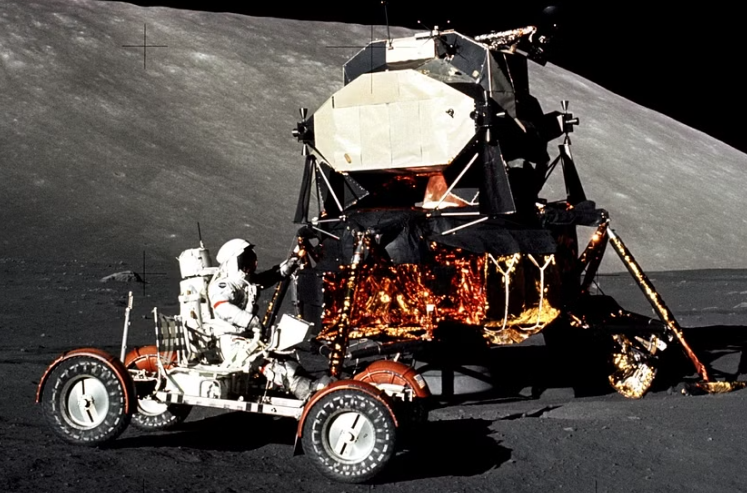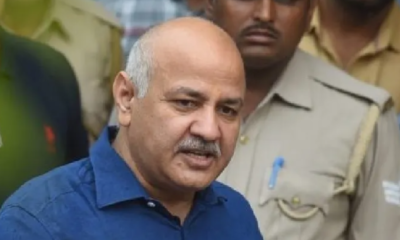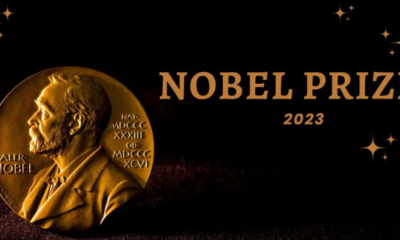Lunar Science
ISRO’s Chandrayaan 3: India’s Ambitious Lunar Mission Marks a New Chapter in Space Exploration

To reaffirm its prowess in space exploration, the Indian Space Research Organisation (ISRO) has announced the ambitious Chandrayaan 3 mission. Chandrayaan 3 is the third installment in India’s lunar exploration program. While Chandrayaan 1 was an orbiter mission, and Chandrayaan 2 included an orbiter, lander (Vikram), and rover (Pragyan), Chandrayaan 3 marks a significant shift in focus.
This mission is solely dedicated to landing on the Moon’s surface and is a critical step in India’s lunar exploration journey. The primary objective of Chandrayaan 3 is to achieve a successful soft landing, building upon the valuable lessons learned from the Chandrayaan 2 mission, which faced challenges during its attempted landing. Chandrayaan 3 represents ISRO’s dedication to learning from past experiences, meticulously analyzing the technical glitches, and refining its approach to ensure a flawless landing this time.
One remarkable aspect of Chandrayaan 3 is its collaborative nature. ISRO is partnering with several international space agencies and organizations to ensure the mission’s success. This collaborative spirit aligns with the global trend in space exploration, where nations pool their expertise and resources for ambitious missions.
Chandrayaan 3 incorporates various technological advancements, including enhanced communication systems, updated landing gear, and more robust navigation and guidance systems. These improvements are designed to increase the mission’s chances of a successful lunar landing. Beyond the primary goal of achieving a soft landing, Chandrayaan 3 carries scientific instruments aimed at furthering our understanding of the Moon. These instruments will analyze lunar soil and surface features, providing valuable insights into the Moon’s geological history.
The Chandrayaan 3 mission holds global significance as it represents not only India’s ongoing commitment to space exploration but also the broader international collaborative efforts in the field. Space exploration transcends national boundaries, and missions like Chandrayaan 3 contribute to our collective understanding of the cosmos.
Chandrayaan 3 symbolizes not just a mission to explore the Moon but also a testament to human ingenuity, cooperation, and the insatiable curiosity that drives us to reach for the stars. As India sets its sights on the Moon once again with Chandrayaan 3, the world watches with anticipation and excitement. This mission is a testament to ISRO’s resilience, determination, and commitment to pushing the boundaries of space exploration. Chandrayaan 3’s journey will undoubtedly be a remarkable chapter in the ongoing human quest to explore and understand the cosmos.

Featured
Apollo 17 Lander Base Unveils Surprising Moonquake Phenomenon: Lunar Seismic Insights Expand

American astronauts left behind a legacy that goes far beyond their lunar surface footprints when they set out on the historic Apollo programme flights to the moon. Seismometers placed on the moon, which provided a window into the lunar seismic activity similar to earthquakes on Earth, are among their lasting accomplishments. The primary focus of lunar investigation for decades has been on moonquakes, which were initially divided into four categories: deep, shallow, thermal, and meteorite impact-induced. A fifth type of moonquake with origins in the Apollo 17 lunar lander base has been discovered as a result of the recent analysis of thermal earthquake data gathered during the mission.
Three seismometers were carefully set up and put on the lunar surface at key locations during the Apollo 17 mission to gather information about thermal earthquakes. The goal of this data collection, which took place between October 1976 and May 1977, was to comprehend how the moon behaved seismically in reaction to dramatic temperature changes. Temperatures on the moon fluctuate wildly between a scorching 121 degrees Celsius and a bone-chilling -133 degrees Celsius when the environment changes from a hot lunar day to a cold lunar night.
It’s interesting to note that the early research was mostly focused on these thermal moonquakes. However, the careful examination of this data using modern techniques like machine learning allowed researchers from the California Institute of Technology to make an altogether unexpected discovery. While thermal quakes did often occur during the lunar day, another series of tremors that appeared to have nothing to do with the thermal cycle happened in the morning. Scientists were shocked to learn that the Apollo 17 lunar lander base itself was the source of these unusual moonquakes as they linked the source of these unexplained quakes.
Each morning, as the lunar surface absorbed the Sun’s heat, the lander base expanded and vibrated. This expansion and contraction created a fascinating moonquake phenomenon, similar to the lander “popping off.” The lunar morning “popping” episodes took place over the course of 5-7 Earth hours at astonishingly regular frequencies of every 5–6 minutes. Although these moonquakes were not caused by natural causes, they provided an invaluable opportunity to learn more about the seismic activities of the moon and how human actions can unintentionally affect them.
Recent lunar exploration has added to our understanding of lunar seismic activity beyond what the Apollo expedition discovered. For instance, the Instrument for Lunar Seismic Activity (ILSA) was placed on the Moon’s surface by India’s Chandrayaan-3 mission. On August 26, 2023, ILSA detected a moonquake, which is remarkable. However, the exact cause of the event is still being investigated. Chandrayaan-3, which is currently dormant throughout the lunar night, is waiting for more investigation to reveal the enigmatic cause of this lunar tremor.
In the end, the discovery of moonquakes produced by the Apollo 17 lunar lander base has added an intriguing layer to our knowledge of lunar seismic activity. Despite not having a natural lunar origin, these moonquakes offer priceless insights into the geological behaviour of the moon and the possible effects of human activities on lunar seismicity. We can expect more information about the Moon’s underlying composition, the history of its craters, and the potential existence of essential resources like water ice as lunar exploration advances, including missions like Chandrayaan-3. This ongoing study has the potential to advance our knowledge of the celestial body that is closest to our planet.
Featured
Digital Engineering and Space: Software Collaborations Power Lunar Explorations

The first man’s moon landing was a historic achievement for humanity fifty years ago. It served as a testimony to human creativity, bravery, and enduring resolve. In addition to capturing the world’s attention, the momentous Apollo 11 mission spawned a wave of innovation across several industries, reigniting our love for space exploration.
In the present day, we are on the verge of a new age in space exploration. Computer-aided engineering (CAE) software is positioned as a silent hero in the background, allowing us to reach for outer space, much like the 1960s. A strong commercial CAE business has since developed due to the considerable advances in CAE made in the late 20th century due to the historical space race.
The pioneers of this CAE revolution included MSC Software’s founders. The MacNeal Schwendler Corporation, founded in 1963, was instrumental in advancing early computational technologies for the aerospace sector. Furthermore, the foundation of MSC Nastran, a programme used for structural analysis, was initially created for NASA’s Apollo Space Programme. A commercial version of this programme was first released by the MSC programme in 1971, and Hexagon’s Manufacturing Intelligence section still uses it today. One of the hallmarks of MSC’s software is its remarkable co-simulation capabilities in CAE, enabling highly precise and reliable engineering simulations across various industries, including aerospace.
Since the 1960s, when it was essentially a competition for supremacy between the Cold War superpowers, the United States and Russia, space exploration has undergone substantial change. Today, a number of countries and businesses are making their presence in space apparent. With their lunar and asteroid expeditions, China, India, and Japan have made substantial progress. At the same time, private businessmen like Richard Branson, Jeff Bezos, and Elon Musk compete to dominate commercial space travel.
With these advancements in technology, formerly fantastical concepts like polar moon bases, lunar mining, meteorite landings, and Mars colonies have become achievable goals. The complex lunar 3-D printing facilities, factories, chemical processing plants, and sustainable space agriculture are all designed and evaluated using CAE software.
As the world looks anew at space exploration, Siemens Digital Industries Software recently unveiled an exciting collaboration with Israel’s SpaceIL, a prime example of the intersection between space exploration and digital engineering.
For their planned Beresheet 2 mission, SpaceIL, the company behind the Beresheet lunar expeditions, is utilising Siemens’ Xcelerator software and services. By simulating temperature settings, Siemens’ Simcenter 3D programme will anticipate potential thermal problems for the spacecraft. The complex multidisciplinary system of the spacecraft will be simulated by Simcenter Amesim software, resulting in accurate performance predictions. Electrical harness design will be handled using CapitalTM software, while programme requirements and verification will be handled by Polarion REQUIREMENTS software.
SpaceIL’s goal is to become the first private enterprise to achieve a dual lunar landing in a single mission. Siemens Digital Industries Software is enthusiastic about its role in supporting this lunar mission.
In the end, outstanding accomplishments and interdisciplinary efforts have shaped space exploration in the past, present, and future. Humanity’s journey to the skies has inspired us all throughout history, from the Apollo 11 mission to contemporary revolutionary CAE software and partnerships like Siemens’ relationship with SpaceIL. We could anticipate even more amazing advancements as we explore the cosmos further, propelled by an innovative spirit and a quest for knowledge, as we stand at the turning point of the 21st century.
-

 Featured9 months ago
Featured9 months agoOnline Threats for Jewish Students in Cornell University – Flaunt Post
-

 Entertainment1 month ago
Entertainment1 month agoSamantha Gabronino, Katwalk Doll Queen, Wins Miss Freedom of the World Grand Prix Title
-

 Sports11 months ago
Sports11 months agoWATCH: Virat Kohli Shakes A Leg On ‘Lungi Dance’ Song During India Vs Sri Lanka Asia Cup 2023 Super 4 Match
-

 Featured9 months ago
Featured9 months agoSupreme Court Delays Verdict in Manish Sisodia’s Corruption Case, Legal Battle Continues – Flaunt Post
-

 Featured10 months ago
Featured10 months agoNobel Prize 2023: Celebrating Outstanding Achievements in Science, Medicine, and Literature – Flaunt Post
-

 Entertainment10 months ago
Entertainment10 months agoOne Piece Live-Action Series Sparks Hilarity and Spice in Netflix’s Fan-Fueled Promotions – Flaunt Post
-

 Featured3 months ago
Featured3 months agoSerena Novikov: Modeling Success in the Digital World
-

 Featured9 months ago
Featured9 months agoWarning for increased terror threat by FBI director – Flaunt Post